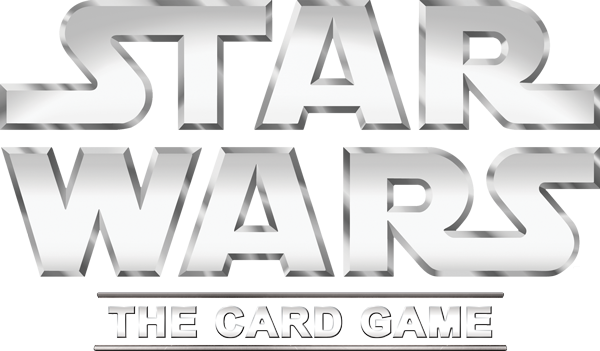
A Good Balance
A Guest Article on the Force Struggle in STAR WARS (TM): The Card Game

“Strong I am with the Force, but not that strong. Twilight is upon me, and soon, night must fall. That is the way of things. The way of the Force.”
–Yoda, Star Wars: Return of the Jedi
The Force struggle is a vital part of Star Wars™: The Card Game, with important consequences for both sides. This struggle occurs at the end of each round, which leads to one side or another taking control of the Balance of the Force. The dark side is rewarded for holding the Force with a faster advancing Death Star dial, while the light side deals additional damage to dark side objectives.
Both sides have much to gain from holding the Force, but maintaining control of the Force is more difficult than it seems. Today, guest writer Jarrett McBride, a Top 16 finalist at the 2013 Star Wars: The Card Game World Championships, writes on how to best keep hold of the Force struggle.
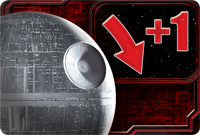
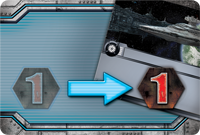
Jarrett McBride on Holding the Force
In The Empire Strikes Back, Luke Skywalker trains to become a Jedi on Dagobah, while Han Solo, Princess Leia, and the other heroes are captured by Darth Vader as the bait in a trap for Luke. Sensing his friends’ danger, Luke doesn’t hesitate to rush to save his friends. Luke pays the price for his haste by losing his hand in a conflict that he wasn’t prepared for. If he had listened to the words of Yoda, he could have completed his training, letting Han and Leia make their sacrifices and allowing Luke to be more prepared for his eventual battle with Vader. Luke didn’t understand the importance of the Force, and he let his fears influence him.
While playing Star Wars: The Card Game, you may have found yourself in similar situations before, where you end up paying the price for blindly attacking without looking to the Force. The Force struggle is one of the most easily overlooked aspects of Star Wars: The Card Game. Controlling the Force means controlling the speed of the game. I can’t count how many times I’ve seen players not worry about the Force until the later turns of the game, when it sometimes matters the least. You wouldn’t usually have to worry about controlling the Force if you tipped the balance in your favor early on.
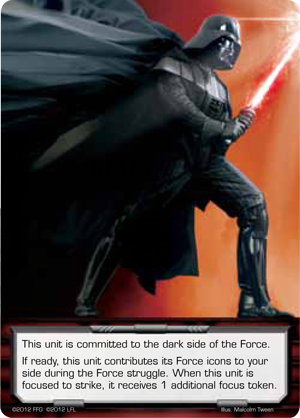
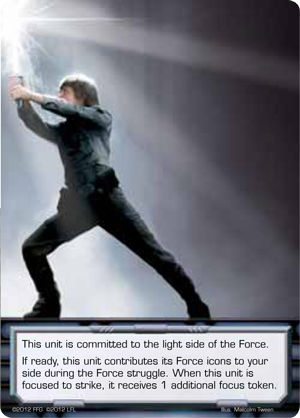
Devotion to the Dark Side
By the game’s design, the dark side actually has the easiest time grabbing control of the Force. They start the game first, and that means they have the first opportunity to commit a unit to the Force struggle. As a dark side player, you need to take advantage of this opening, as it increases your chances of keeping the Force in subsequent turns. Because you’ve already committed one or more units to the Force, the required Force icon total for your opponent to take the Force is higher. Controlling the Force as a dark side player speeds the game up quickly. Instead of having eleven turns in a game, you could have as few as three.
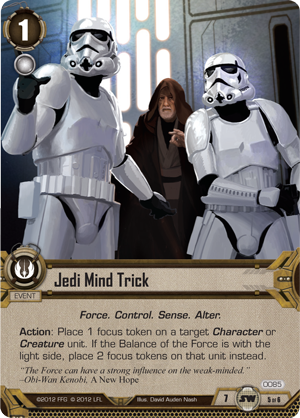 By keeping the Balance of the Force, you’re not only speeding up the game, you’re also putting your opponent in a position where they could make poor choices, such as attacking at the wrong time, not being able to push enough damage through to your objectives, or even committing units to the Force they would normally use to attack. You’re also preventing damage each turn, by keeping the light side from getting the one damage bonus for keeping the Force. One damage might not seem like much, but in a tight game, it breaks objectives easily.
By keeping the Balance of the Force, you’re not only speeding up the game, you’re also putting your opponent in a position where they could make poor choices, such as attacking at the wrong time, not being able to push enough damage through to your objectives, or even committing units to the Force they would normally use to attack. You’re also preventing damage each turn, by keeping the light side from getting the one damage bonus for keeping the Force. One damage might not seem like much, but in a tight game, it breaks objectives easily.
Training in the Force
As the light side player, you’re the natural aggressor, and you need to successfully strike agains the dark side to win. This usually means you want to attack early, while the dark side is still developing its position. The problem is the dark side gets to decide if they throw their committed units into defense or if they hold them back to keep the Force. Because of this design, if a light side player is constantly just dropping units into play and attacking, you’re likely not worrying about the Force struggle, which means the Death Star is rapidly approaching to end the game. With this fact in mind, you have to learn to play Star Wars: The Card Game as a Jedi.
You cannot always be aggressive. Being aggressive in this game when you’re lacking units, cards in hand, or the Balance of the Force can be fatal. Sometimes it’s best to just play a unit or two, hold a few cards in your hand, and commit those units to the Force. You’re not actually losing any tempo this way. In fact, you’re slowing the game down, giving yourself more time to make tactical decisions over the long game. You’re changing the game from a potential three turns back to eleven. Sometimes, however, that’s not your best option, and you need to go in for a strike early. When you do this, you’ll want to take full advantage of tactics icons to focus not just your opponent’s defending units, but their Force-committed units not in the engagement, helping you take control of the Force again.
You’ll receive help controlling the Force from certain card effects that may allow you to commit fewer units to the Force, letting you push the attack with more units. You can also control the Force with cards normally used as combat tricks. The light side begins the game with control of the Force, so depending on what units your opponent plays, you may use cards like Rebel Assault (Core Set, 108) or Swindled (Core Set, 130) to destroy or return your opponent’s units to hand before they have a chance to commit to the Force.
You Must Learn Control
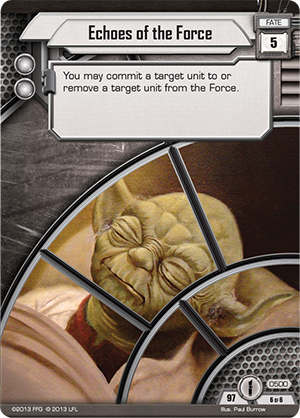 Controlling the Force seems easy enough on the surface – you have more Force icons on ready units committed to the Force than your opponent. But there’s actually a lot more to it than that. Both sides feel the same consequences of attacking or defending with a unit committed to the Force – whenever you strike with a committed unit, you get an extra focus token on that unit. This not only makes controlling the Force important, it makes who you commit to the Force just as important. Since each player can usually only have three Force-committed units, you’ll often want to commit units with higher Force icon counts, but you can never underestimate a single cheap unit taking the Force.
Controlling the Force seems easy enough on the surface – you have more Force icons on ready units committed to the Force than your opponent. But there’s actually a lot more to it than that. Both sides feel the same consequences of attacking or defending with a unit committed to the Force – whenever you strike with a committed unit, you get an extra focus token on that unit. This not only makes controlling the Force important, it makes who you commit to the Force just as important. Since each player can usually only have three Force-committed units, you’ll often want to commit units with higher Force icon counts, but you can never underestimate a single cheap unit taking the Force.
Another way to combat extra focus tokens on Force-committed units is to commit units with the Elite keyword, like Emperor Palpatine (Core Set, 51) or the Aquaris Freeholders (Heroes and Legends, 506). You also have card effects like Bamboozle (Edge of Darkness, 334) to remove focus tokens from your Characters, ensuring you can take or maybe keep the Force. There’s even the fate card Echoes of the Force (Heroes and Legends, 500) from the upcoming Force Pack cycle. This fate card lets you commit or remove units from the Force struggle, thus making combat itself an option for winning the Force struggle. In the end, if you put more emphasis on taking the time to controlling the Balance of the Force, you may notice you’re no longer paying the price for haste in your games.
Thanks, Jarrett!
Jarrett McBride finished in the Top 16 at the 2013 Star Wars: The Card Game World Championships. He frequently writes strategy articles discussing various aspects of the game, contributing to the Star Wars community. Look for more Star Wars guest articles from Jarrett and others in coming weeks!
…
